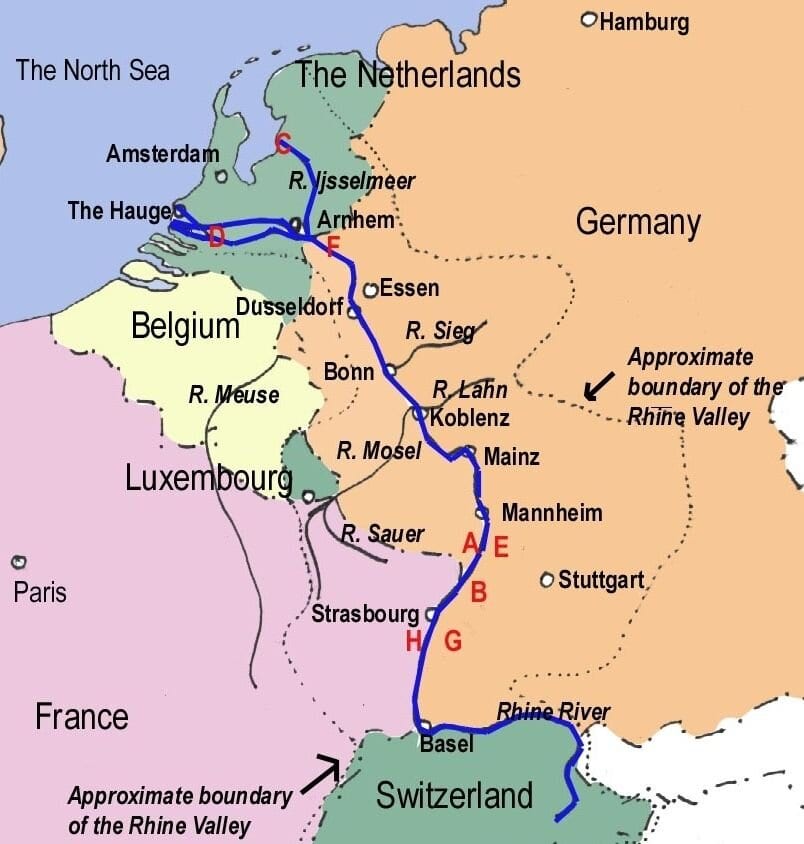Important Facts For Prelims
Dropping Water levels in Germany’s Rhine River
- 09 Jun 2020
- 2 min read
Why in News
Recently, a part of the Rhine River flowing through Germany has been experiencing its lowest water levels in two decades.
- The lowest water levels have prompted fears of shipping disruption on Europe’s most important inland waterway.
- Rhine waters in Germany have dropped 40% since April 2020.
Key Points
- Reduced Water Levels:
- Germany has not received the spring showers and subsequently, the water level dropped to around 1 meter in the month of June which is the lowest for the time of year in at least two decades.
- Usually, a mix of glacial run-off and rain feeds the river, but contributions from glaciers have been disturbed in recent years due to global warming.
- Germany had experienced dropped water levels in 2018 which had disrupted industrial ships, severing downriver factories from North Sea ports.
- Germany has not received the spring showers and subsequently, the water level dropped to around 1 meter in the month of June which is the lowest for the time of year in at least two decades.
- Impacts:
- The water drop levels in 2018 were severe enough to affect German economic growth.
- Further, groundwater levels have reduced after record-breaking heat waves recorded in 2019 which have consequently dried out soil and wilted vegetation from consecutive years of drought.
- Additionally, if the low water levels are sustained, refineries using the river’s water will have reduced output compared to 2018.
Rhine River
- The Rhine River is the second-longest river in Central and Western Europe after the Danube and originates in the Swiss Alps (in Switzerland).
- The Rhine river is called by different names depending on the country it flows through. It is called Rhein in Germany; Rhine in France and Rijn in the Netherlands.
- The Rhine flows through six countries -Switzerland, Principality of Liechtenstein, Austria, Germany, France and the Netherlands before flowing into the North Sea at Rotterdam.





